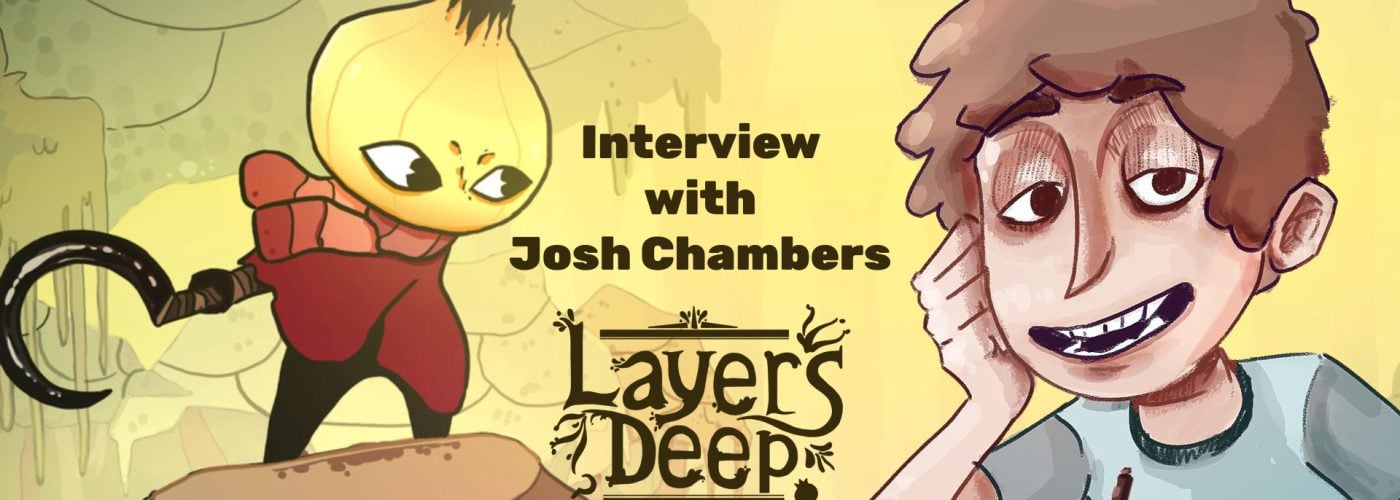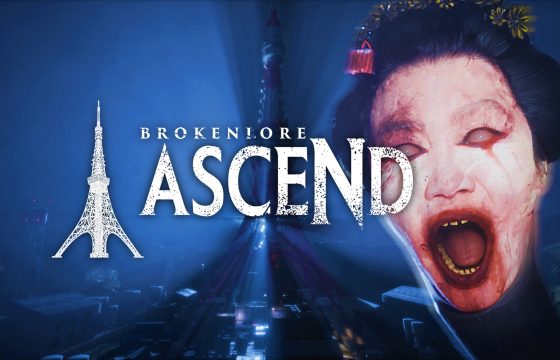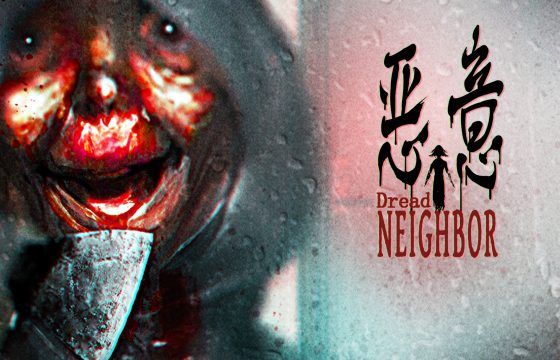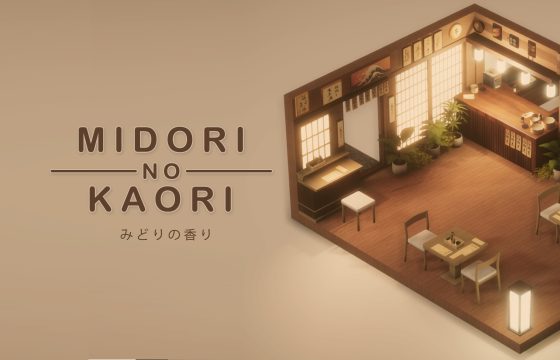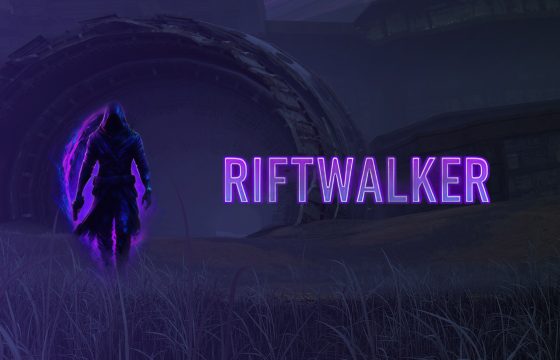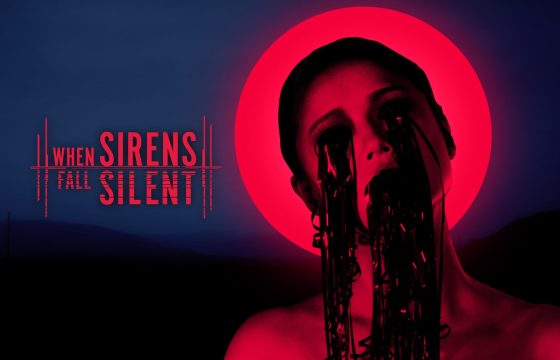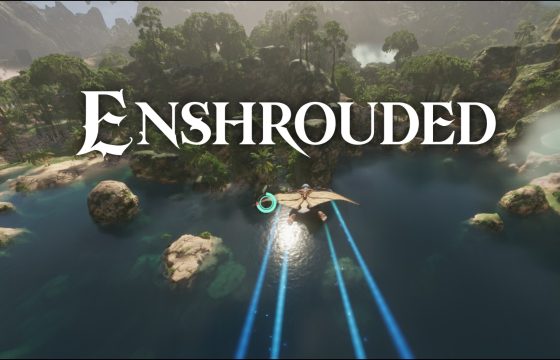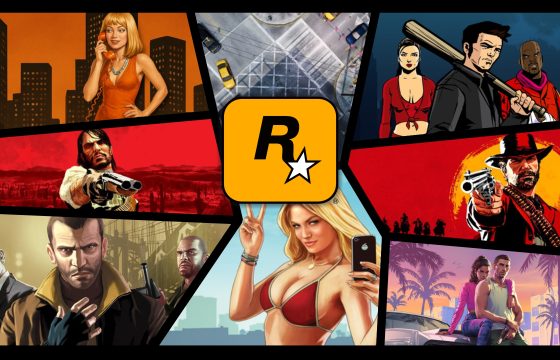What prompted the creators of Layers Deep to envision a humble, anthropomorphic onion the undisputed star of their game? We spoke with its visionary creator, lead artist, and head of animation, Josh Chambers, to find out.

From the very moment we first laid eyes on Layers Deep, one creative choice from the developers immediately captured our attention: what inspired them to cast a simple, defenseless, anthropomorphic onion as the protagonist of a video game? It’s a question we’ve mulled over time and again, eagerly awaiting the opportunity to ask its creators, the two-person indie studio, Tall Order Games.
Well, our curiosity has finally been satisfied. Just a few weeks ago, we had the pleasure of hosting—albeit virtually—Josh Chambers for a lively and insightful interview. Chambers, the author, animator, and lead artist at the studio, is also the visionary behind the original concept for Layers Deep. Throughout the conversation, he answered our most pressing questions about their highly anticipated project (yes, even the one that’s been on our minds for weeks).
Now that we know the story behind it, we’re excited to share it with you. But don’t worry—this isn’t the only fascinating tidbit you’ll find in this interview. Our conversation with Josh turned out to be a fun, revealing, and occasionally humorous deep dive into the world of Layers Deep and its brilliantly unconventional characters.
So, if you’re curious to learn more, or if you simply wish to uncover the quirky reasons why Josh and his “partner-in-crime,” Eric Kalpin, chose an onion as the undisputed star of their anticipated game, join us on this adventure into the eerie and enchanting autumnal realm of Old Antrum. Trust us—it’s a journey worth taking!
A brief yet essential Introduction to Josh Chambers
Better known online by the moniker “Mr. Chambers,“ Josh is an exceptionally talented young artist with a deep-seated passion for the visual arts. He has carved out a distinctive niche for himself as an animator, a creative field where he can most effectively showcase his innate talent through a distinctive and recognizable style. This artistic journey has provided him with the opportunity to contribute to a diverse array of projects, most notably Godspeed, an independent animated short by Olan Rogers, where Chambers played a pivotal role as an animator.
However, it is through his content on YouTube and Twitch—platforms that have significantly broadened his audience—that Josh has truly achieved recognition. His engaging and candid approach, which seamlessly intertwines his passion for animation with his talent for entertainment, has enabled him to cultivate a substantial following in a remarkably short time.
Yet, as his channel continued to grow and his animated videos attracted an ever-expanding audience, a transformative moment arrived in 2021—five years after his first video was uploaded. Josh felt a deep, undeniable need for change—a decisive shift in his professional life. Let it be clear: creating content and forging a deeper connection with his community has always been—and remains—his greatest joy. The desire to share his passion and convey it to a wider audience was something he never wished to relinquish. However, it became increasingly evident that it was no longer sufficient. Josh longed not simply to contribute to the animation industry as an external collaborator but to establish himself as a true auteur—one whose creative vision could be fully realized in a project of his own making.
At the same time, his deep-seated passion and extensive experience as a gamer sparked a strong desire to create something deeply intertwined with the gaming world. What better chance, then, to fuse these two passions into a singular, cohesive vision?
And so, on that fateful day—July 5th, 2021, under the warmth of a summer sun—after months of tireless effort and introspection, Josh made the bold yet thoughtful decision to start anew. He chose to leave behind his career as an animator, strike out on his own, and fully dedicate himself to the creation of his first video game.
The game we are referring to marked the embryonic stage of Layers Deep, one of the many experimental projects that Josh was eager to embark upon. Yet, this time, even Josh could not have anticipated that it would catapult him into an extraordinary, beautiful, and exhilarating odyssey—one that would forever transform both his personal and professional life.
The Interview
Hello Josh, welcome aboard. We’re delighted to have you here with us. Before we jump into discussing Layers Deep, we’d like to begin with an introductory question to explore your background as an artist and animator. Could you share more about yourself, including what sparked your passion for gaming and what drove you to pursue a career in game design?
I’ve always been both a gamer and an animator. My animation journey began back in 2014 when I started posting my work on Newgrounds, which has a strong community not only for animation but also for gaming. It was a natural environment for me to explore both passions simultaneously. However, for the longest time, I believed game development was beyond my reach. Coding seemed far too complex, and I never imagined myself capable of mastering it.
It wasn’t until I landed my first major studio job—working on TV shows for networks like HBO and Netflix—that I felt the need for a new creative outlet. Animation had always been my hobby, but once it became my full-time job, occupying eight hours of my day, I found myself coming home with leftover creative energy. I wanted to dive into something fresh and challenging.
That’s when I discovered Brackeys tutorials and the captivating devlogs of creators like Thomas Brush. Watching them demystify game development was eye-opening; I was immediately hooked. It became clear to me that game development had evolved—tools like Unity had become more accessible—and I began to wonder if this was something I could realistically pursue.
So, I dove in. The more I learned, the more I engaged with the game development community, and soon I made connections with developers. Eventually, I partnered with a coder named Eric, and we started developing a game on the side while still working our regular jobs.
Then, as I mentioned earlier, the animation industry began to shut down. The studios I had worked with either closed or have been dormant for years now. It was at that point that I decided it was time to shift gears and commit to game development full-time. We had a project in the works, and I had confidence in its potential. After years of balancing both careers, game development finally felt like a tangible and exciting new path—one that was no longer just a side project, but something real and full of promise.
Your artistic journey began as a professional animator—a craft that could be considered almost a calling, seemingly innate to your being. Over your career spanning more than 6 years, you have contributed as an animator to TV shows on streaming platforms like Netflix, Hulu, and Adult Swim, in addition to being a key figure in the animation of the series Godspeed, demonstrating your extensive experience in the field. Our question to you is: What does animation mean to you? How did you first venture into it? And importantly, what unique traits and qualities, beyond inherent talent, do you believe animators must possess today to excel in their craft?
Animators today undoubtedly face significant challenges due to the current state of the industry. I’ve had the opportunity to speak at several animation conferences, particularly to college students, in an effort to motivate them and encourage them to stay focused on their craft—despite the industry’s struggles and the increasing focus of executives on AI over human talent. Many of these executives seem to be betting on AI over human creativity, but I truly believe that, in time, that gamble will fail, and they’ll come back seeking out real, talented creators. But, realistically, it’s going to take time before that happens.
When I first began my journey as an animator, the landscape was quite different. I don’t know if you’re familiar with Game Grumps, a big Let’s Play channel—they were huge back then, and still are to this day. I initially started animating just for fun, making fan animations to post on YouTube. At the time, platforms like YouTube and Newgrounds were great for animators; it was actually possible to build an online career through animation alone. That’s far less feasible now, although not impossible—it’s just much harder. Initially, it was all about having fun with web animations. But as I became more serious, I chose to pursue a career in a studio setting, and that’s ultimately what set me on the path I’m on today.
As for the unique skills an animator should have, I believe one of the most important is an innate curiosity about life—people, animals, how things move. You need to become almost obsessed with how characters express themselves. It’s about paying attention to the tiniest details—like how a person walks their dog, how their body fights gravity and stays balanced. That’s the kind of quirky curiosity you need to have as an animator.
Many game developers, on the other hand, often approach animation as secondary—they’re primarily coders or artists who animate their characters out of necessity. But I think games like Cuphead or Souls games show just how transformative animation can be when it’s given the same level of dedication and passion as coding, art, or world-building. When animation is treated with that same reverence, it elevates the entire gaming experience to something extraordinary.
So yeah, that’s my (slightly long-winded) answer! I hope it touches on what you were asking!
Three years ago, you left your job as an animator to channel all your energy and effort into one of your greatest ambitions: creating a video game from scratch as a self-taught developer, without any prior knowledge of game design. It was an extremely courageous choice—some might even say reckless—but it was about following your dreams and the passion that has always been a part of you and filled your days. Thus, you and Eric embarked on this odyssey, founding your own video game studio, Tall Order Games. Can you share what motivated this bold decision and why you chose Eric as your partner in this venture to create your first video game? What is your relationship like, and how did you two meet?
I’ve known Eric for nearly 10 years now. We first crossed paths at a Newgrounds event back when they used to hold annual gatherings, and they’re starting to bring those back again. It was at one of those events that I met Eric, and we immediately hit it off. Eric is one of those multi-talented individuals; he started as an animator and artist, later attended design school, and eventually became a coder and web developer. He’s one of those rare individuals who can dive into something new and master it almost instantly, which I’ve always deeply admired and respected.
Over the years, we collaborated on a few smaller animation projects just for fun, but we had never tackled anything on a larger scale. We had discussed working on something bigger plenty of times, but it wasn’t until I lost my job in the animation industry that we finally made the leap. At the time, I had been working on a game, and during one of our regular calls—where we’d typically play games and discuss our projects—I showed him what I was working on. I asked, “If you could improve this, how would you do it?”
Eric, along with our mutual friend Fred, suggested scrapping the game entirely and rebuilding it from the ground up. I thought their idea was brilliant, so I proposed, “Why don’t we do that together?” Eric immediately agreed, and we began working on it. As the project progressed, I realized we might be able to secure funding and make this a reality. That’s when we really locked in and pushed the project forward to where it is today.
Before we delve deeper into the core of Layers Deep, let’s go back to the time just before you began developing the broader concept of the project. What was the spark that ignited the fire, the element from which you started to build the world of Layers Deep? Did you start with a particular reference, an image, or a specific idea, or did it all come together more organically in your mind, and from there, it was simply a matter of putting pen to paper to bring it to life?
That’s a great question, especially following the last one, as it naturally picks up where we left off. When Eric first looked at the game, it had a very Tim Burton-esque aesthetic—something reminiscent of ParaNorman or The Nightmare Before Christmas. He asked me if that was truly the direction I wanted to take, and as I tried to explain my vision, it felt somewhat forced, like I was just doing it for the sake of doing it.
That prompted us to re-evaluate our creative direction. We had been discussing Over the Garden Wall quite a bit, and the idea emerged: “What if we could capture that same cozy, Southern, autumnal atmosphere in a game, but place it in an open world where players could truly lose themselves?” From that point on, everything started to fall into place organically.
I’ve also been deeply inspired by Hollow Knight, which I consider one of the best Metroidvanias ever made. It really pushed the genre forward, and I think there’s a lot to be learned from it. Our goal is to take that same spirit—learning from the great Metroidvanias of both the past and present—and apply it to create something entirely new. We want to build a world that hasn’t been seen in games before, addressing the challenges these games solved and pushing even further. That’s essentially our mission.

One of the questions that intrigues us the most, and we’re confident will captivate other players, centers around the protagonist of Layers Deep. What was the inspiration behind choosing an anthropomorphic onion? What motivated the decision to feature one of gastronomy’s most underrated ingredients in such a prominent role in your game? Is there a humorous anecdote or a previous funny – or even perhaps traumatic – experience with onions that influenced the design of the protagonist?
Oh man, I wish I had a funnier story for you! I do have a soft spot for onions—they’re one of those ingredients that can enhance almost any savory dish. But honestly, the story behind this is pretty simple. We often have these art sessions where we sit down for hours and just draw, letting ideas flow. When we first started conceptualizing the game’s setting, we had one of those sessions.
At some point, we realized that we couldn’t just default to a pumpkin for a key element—pumpkins are everywhere in media, especially in autumnal settings. That’s when my friend Fred casually drew an onion, and for some reason, it just cracked us up. He gave it these quirky cat-like eyes, and we couldn’t stop laughing. But beyond the humor, there was something about it that just felt right. It was one of those moments where we all looked at it and thought, “Yep, that’s it. The onion is the one!”
A natural follow-up to the previous question is this: how do you effectively give an onion a distinct personality? How do you make its character design not only visually intriguing, but also deeply expressive in terms of personality? What are the key traits of our protagonist’s character, and how are you working to bring those qualities to life?
I envision the onion as a silent protagonist, which aligns with our current design philosophy. This approach evokes the charm of characters in games like Hollow Knight and Zelda, where the main character is a small, voiceless figure. By crafting a protagonist that is somewhat of an empty vessel, we invite players to project their own personalities onto the onion, fostering a deeper connection. Our aspiration is for players to relate to the onion, seeing their own experiences and emotions reflected in its journey.

Small and defenseless yet adventurous and fearless, it is adorned with a small coat and scarf that protect its slender bulb. The protagonist of Layers is a distinctly unusual and peculiar creature within the world of Old Antrum, nurtured under the guardianship of The Patch, a civilization of pumpkins, gourds, and other fall-time crop that have provided care for the protagonist, enabling its birth and the beginning of its life cycle. Could you reveal more details about the protagonist’s background and how it fits into the game’s lore?
I’d prefer not to reveal too much, as much of the enjoyment for players lies in uncovering the lore throughout the game. Additionally, we are still actively developing much of it. Essentially, the Patch is a faction within Old Antrum, a realm from which various organic creatures, like the onion, originate. You find yourself as one of the few onions to emerge amidst a backdrop of zombified pumpkins, sprouting during a time when most life is waning—essentially at the tail end of fall.
The game delves into themes surrounding the cycles of seasons and the nature of existence. Old Antrum is uniquely lit by a network of sunflowers that provide light, creating an illusion of daytime in certain subterranean areas. However, this light is beginning to fade, which introduces a central mystery for players to unravel.
There are also identity crises among some characters, particularly the mushroom faction, which is just starting to gain sentience during this tumultuous time. This mirrors the player’s own journey of self-discovery. As players navigate the game, they will confront existential questions such as: Who am I? Why do I exist? What will I do with the fleeting time I have? Ultimately, this exploration invites players to reflect on the broader cycle of life that persists beyond their individual experiences.
One of the most visually captivating features of Layers Deep is unquestionably the realm of Old Antrum, the caricatural and grotesque autumnal representation of the underground world where a variety of curious sentient plant species coexist harmoniously. How are you approaching the environmental design, especially in terms of structural world-building? As our protagonist’s journey unfolds from underground to the surface, will the development follow a bottom-to-top progression, or are there other unique progression dynamics at play?
I believe that a bottom-to-top progression system will guide how players navigate the map. However, we definitely aim to incorporate unexpected twists. The higher players climb, the more they’ll be able to explore lateral and downward paths. One of the elements that sets Hollow Knight apart is its true open-world feel, and we aspire to achieve something similar. Our game will feature nonlinear progression, with a map that loops back on itself, allowing players to uncover new areas that connect to those they’ve already explored.
As a Metroidvania, the game will present players with challenges, such as vines that were previously inaccessible. Once players unlock new abilities, they can revisit those spots to discover new routes. Our goal is for players to zigzag throughout the map, fostering a sense of organic exploration.
In designing the biomes, we carefully consider how they interconnect, emphasizing significant landmarks that unify both gameplay and visuals. For instance, the Thicket—the main area where players begin—features massive roots that extend down into the Patch. Consequently, when players are in the Patch, they will notice these enormous roots in the background, helping them understand the relationship between different locations.

A population of chic and aristocratic Frogs preparing for mass hibernation, mysterious colonizing Crows, a community of friendly Mushrooms known as the Mycelia, and enigmatic creatures veiled in darkness that threaten the stability of Old Antrum. Could you provide further insights into the diverse animal and plant species that will inhabit the game world? What drives their migratory movements towards Old Antrum?
Absolutely! As players venture through the world, they’ll quickly realize that most creatures are hostile. The NPCs they encounter are often on their own quests, representing various factions like the frogs, mushrooms, and crows. While some characters may be friendly, the majority will pose a real challenge.
We want players to gradually uncover the lore of Old Antrum, a place shaped by diverse religions, languages, and cultures. For example, to communicate with the frogs, players may need to find a special item that allows them to understand the frog language—definitely a challenge for an onion to grasp!

Throughout the game, there will be numerous quests scattered across the map. Each faction will have friendly characters alongside the more hostile creatures. For example, the Patch is home to pumpkin beings, while the frogs are generally docile, albeit in a state of mid-hibernation. Meanwhile, on the western part of the map, players will encounter the crows, who are anything but friendly—though this area won’t be accessible until later in the game.
Without revealing too much, I can also mention that there’s a faction of cannibalistic pumpkins living above the Thicket, who dwell in treetops and behave in a savage manner. We’re really focusing on creating a rich variety of enemies and NPCs. Personally, I find it dull when a game repeats the same enemies over and over again. Our goal is to keep players constantly surprised and intrigued by offering something fresh and unexpected with every new area they explore.
So, if we’ve understood correctly, Old Antrum will feature a structured, hierarchical society with defined social classes, governed by strict rules that its inhabitants must abide by to coexist. Or is there something even more complex at play, perhaps tied to the very nature of the world or even to fate itself?
Absolutely! There’s definitely a sense of societal hierarchy in Old Antrum. There are specific areas dedicated to worship and others designed purely for living, creating a clear sense of purpose throughout the world. I think a well-crafted open world conveys these ideas naturally, and we’ve put thought into those details. For example, the materials people use to build structures depend heavily on the environment—wood, clay, and stone. Clay would be more common near the mines, stone closer to the ground, and wood might be the most widespread. I enjoy considering how these elements come together because it helps make the world feel grounded and immersive. When every building and structure has a purpose, it starts to feel like a real place, where people were driven by real motivations behind each decision.
One thing that particularly impressed us about you, Josh, is that even before giving the game an official name, you already had a clear vision for the art design and its intended communication—an art style that aimed to shape a world through vivid colors and shades inspired by the autumn season. This is by no means a given or trivial and speaks volumes about the artistic direction you envisioned for the project. What was your starting point for the art concept, and why did you choose this style—grotesque yet extremely familiar and comforting—especially considering the profound and sensitive themes the game will explore?
When we embarked on the journey of creating this game, all of us—Eric, our character designer Fred, and I—were navigating challenging times in our careers and personal lives. We envisioned this game as our “cabin in the woods”—a sanctuary for us, where we could escape our realities. This foundational idea inspired the emotional tone and aesthetic we aimed to achieve.
Inspired by our favorite show, Over the Garden Wall, we decided to embrace a similar art style that evokes comfort. Our goal has always been to design a world that feels welcoming, tactile, and rich in detail. We wanted to create that cozy Metroidvania experience while also incorporating engaging combat and challenging gameplay.
We drew from our love for classic Metroidvanias, particularly Hollow Knight, and thought, “I wish there were more games like this.” Ultimately, the essence of the game reflects the emotions we were experiencing when we started the project, combined with our influences as gamers. It’s a blend of nostalgia and aspiration that we’re excited to share.
In recent years, alongside your past work in animation, you’ve dabbled in video game development during your free time. Starting with the basics and then delving into the intricacies of game design, you developed a particular interest in Metroidvania-style gameplay. Our question is: why did you choose the Metroidvania formula for your title, especially given the high competition in the genre? What specific features and unique elements do you believe Layers Deep possesses that will set it apart from the many excellent titles within the Metroidvania genre?
The Metroidvania genre is undoubtedly saturated and competitive, yet it remains one of my absolute favorites, alongside Souls-like games. As a dedicated fan of Metroidvanias, I firmly believe that as long as a game is well-crafted, there can never be too many in this genre.
At its core, a Metroidvania is essentially a 2D open-world game, allowing for a vast array of interpretations. Whether a game leans towards a more linear progression or explores a specific setting, the gameplay can vary significantly. For example, Animal Well is a puzzle-based game devoid of combat, while Hollow Knight embraces Souls-like mechanics with minimal puzzles. It’s fascinating how these two distinct games can coexist within the same genre, highlighting the flexibility of Metroidvania.
This diversity also means that not every fan will resonate with the same titles. Some may find joy in puzzle-oriented gameplay, while others prefer the action of combat-heavy titles like Hollow Knight. This openness grants creators immense creative freedom, which I find particularly appealing as an artist.
The specific kind of Metroidvania we are crafting leverages the strengths of both Eric and myself. If asked which genre I believe I could excel at creating, it would undoubtedly be Metroidvanias. There remains a wealth of opportunity to express unique perspectives and innovative ideas within this genre, and I am genuinely excited about the potential to contribute to its evolution. That’s why I’m so passionate about it.
It’s quite unusual but equally fascinating to infuse Layers Deep with a cozy atmosphere, a choice that few have made in the Metroidvania genre. In your opinion, what elements define a cozy Metroidvania, and what specific aspects and features make Layers Deep embody this cozy vibe?
The term “cozy game” has taken on new connotations lately, so I want to be mindful of how I use it, as I certainly don’t want to overshadow any existing genres. For me, the essence of a cozy game can be distilled into a vibe—a harmonious blend of visuals, sounds, and gameplay.
It’s entirely feasible to create a challenging game that still embodies coziness, but it’s crucial that this challenge is complemented by gameplay variety. Players should find the experience of exploring the world both enjoyable and inviting, allowing them to become truly immersed.
Furthermore, the world must feel tactile and responsive. When players interact with elements in the environment—like striking a sign—it’s important that they receive tangible feedback, enhancing their sense of presence within the game.
Crafting a cozy game involves countless subtle choices in art, sound, and gameplay that ultimately converge into a cohesive experience. If I had to encapsulate it in one moment, I envision the satisfying sound of leaves crunching beneath your feet while you strike a sign and watch it split in half. That, for me, epitomizes a cozy Metroidvania—rich in responsiveness and audio immersion.

An intriguing aspect of the character design is the protagonist’s complete lack of limbs (as is the case with all other onions), replaced instead by a scythe. This tool serves not only in combat but also doubles as a grappling hook to aid in traversal and platforming, significantly enhancing mobility. Are these the only skills at its disposal, or will there be other unique abilities, possibly stemming from its distinctive anatomy compared to other inhabitants of Old Antrum?
We are definitely planning to introduce additional abilities in the game. Currently, our existing abilities may seem somewhat traditional, but we are excited to experiment with a variety of unique and unconventional powers that could catch players off guard—especially considering they would come from an onion character. Right now, we are exploring around three to five abilities, but we are constantly brainstorming new concepts.
Our commitment to innovation is unwavering; we want to continue pushing the envelope with new abilities, as this creative process is immensely enjoyable for us. So, players can definitely expect to encounter some delightfully bizarre abilities in the game—after all, the weirder, the better!
Eggplants in the throes of mass vegetative zombification, pumpkins and gourds feeding on highly decomposed corpses, and other crops behaving in decidedly unusual ways for mere vegetables. The trailers show just a few species of what seems to be a vast variety and quantity of enemies awaiting us in Layers Deep. Will the primary threats come solely from the plant realm, or will the animal world also pose a danger? Additionally, do you plan to provide players with a “vegetable bestiary” where they can uncover details about the various creatures and learn who they were before this apocalyptic vegetative zombification irreparably changed their lives?
We’re definitely aiming to include a robust bestiary, and the enemies will go far beyond just vegetables. Players can expect a wide range of creatures, from animals to cryptids, offering a variety that will truly stand out. We’re pushing ourselves to create enemies that are not only visually distinct but also diverse in behavior and design.
Expect the unexpected! I’m personally a huge fan of bestiaries, so having one in the game is a must for us, and we’re excited to fill it with all kinds of unique and imaginative creatures.
In one of the episodes of the Layers Deep Devlog, you mentioned being an ardent fan of the Soulsborne combat system from FromSoftware. Naturally, this leads us to ask: what kind of experience are you aiming to deliver with the combat system? What approach are you planning to take with the design of the boss fights?
Our main design philosophy for boss fights is that they should feel like authentic, visceral encounters. We aim for simplicity, but with intensity—no gimmicks, no artificial mechanics. The focus is on reducing the boss’s health through direct combat. If it takes a specific amount of damage to bring the boss down, then that’s all there is to it. No need for “hit this weak spot three times” tricks or artificial obstacles.
I’m not fond of those kinds of mechanics. I want players to feel like they’re really in a fight, where the boss is a living creature struggling to survive, doing everything it can to make sure you don’t win. That’s the primary pillar we’re sticking to, though we do want to include plenty of variety in our encounters.
It’s definitely a more “Souls-like” approach, where the challenge is in simply taking down the boss by depleting its health bar. Cuphead also follows a similar philosophy—it may be a different genre, but the essence is the same: no gimmicks, just pure combat. That’s the direction we’re heading in right now.

Video games have frequently demonstrated that words are not always the most effective means of communication, and often non-verbal cues provide the most authentic expression of characters’ true selves. In the realm of Old Antrum, what constitutes the official language? Will the game adopt an existing language, or are you considering developing a unique, universal language through which plants, vegetables, and animals can communicate?
At the moment, the only characters who don’t speak a standard language are the frogs. They have their own unique dialect, and players will need to find a specific item to understand them and access their quests. Other creatures communicate in what you could call the “common” language—essentially, the language the game is localized in for the player.
We’ve deliberately kept it to just the frogs with their own language to avoid overwhelming players. Too many languages could create confusion, and we want to ensure the world remains immersive while still being accessible.
In the vibrant and diverse character lineup of Layers Deep, Alanah certainly doesn’t go unnoticed—a young Mycelia accompanied by her faithful four-legged companion, voiced by writer and content creator Alanah Pearce. What prompted the choice of this character for Alanah? Will this be her sole significant role in the cast, or are there other surprises in store, such as introducing your own vegetable alter ego into the world of Old Antrum?
Having Alanah join the project was truly an unexpected stroke of luck. During the pre-launch of our Kickstarter campaign, I was reaching out to various influencers and content creators that I personally follow, just asking if they’d be interested in talking about our game, Layer Deep, or sharing it with their audience. Alanah not only showed interest in the project, but she generously offered to help promote it, and even went as far as becoming a part of the game herself by signing posters for fans.
As a professional voice actor, we’re thrilled to collaborate with her. She has also shown interest in contributing to the game’s writing, and if that opportunity is still available, we would be delighted to have her on board.
The way everything fell into place was truly serendipitous, and we couldn’t be more delighted with how it all turned out. As for myself, I’m not planning on voicing any characters—unless it becomes a necessity—since voice acting isn’t exactly my strength. Furthermore, the game isn’t designed to have heavy dialogue; instead, characters will communicate in a manner reminiscent of Banjo-Kazooie, using expressive sounds alongside on-screen text.
The second pivotal partnership for the game involves The Blasting Company, the talented ensemble known for composing the score of the animated series Over The Garden Wall and entrusted with creating the OST for Layers Deep. What kind of auditory experience are you aiming to craft, and which musical instruments will define this style? Did you begin with a specific musical reference or genre to guide the band’s work, or did you grant them complete creative freedom in developing the OST?
We have yet to fully embark on our collaboration with The Blasting Company, but our first meeting is on the horizon. The music featured in our trailer comes from one of their existing albums, which they graciously allowed us to use during our pre-Kickstarter phase when we were operating on a minimal budget. Recognizing our circumstances, The Blasting Company graciously offered us one of their tracks, and we look forward to discussing the creation of original music once we secure funding.
Both the world and the music of our game have drawn inspiration from Over the Garden Wall and The Blasting Company. Their willingness to collaborate is particularly meaningful for us, as they embody the creative spirit that has influenced much of our vision. As we begin scoring this month, guiding them will likely be effortless, as their musical direction aligns perfectly with our artistic vision.
It was important for us to feature live musicians playing real instruments to enrich the authenticity of our game. With our world being hand-painted and our characters hand-animated, we believe the music should be performed live as well. We aim to incorporate eclectic instruments like the accordion, violins, and mandolins—elements with which The Blasting Company is well-versed. The soundtrack will likely draw inspiration from the folk music of the 1930s, capturing the essence of that era. For fans of The Blasting Company, the game’s soundtrack will be precisely what they expect.
To your surprise, the Kickstarter campaign has proven to be an unprecedented success, resonating deeply among fans of the Metroidvania genre. Looking ahead, what are the next steps for the project? Have you already set a tentative release window and considered the platforms on which you aim to launch the game?
We haven’t yet finalized our plans regarding platforms or a release window. Our primary focus at this stage has been on building the business, a process that has required more time and attention than I initially anticipated. Currently, we are fully immersed in the game’s development, working diligently towards our first playable demo for our backers.
This demo will allow us to engage in a productive dialogue with our backers, facilitating a feedback loop where they can share their thoughts on what they enjoy and what could be improved. As we incorporate their insights into our development process, we anticipate gaining a clearer understanding of our release timeline. Ultimately, once our backers express enthusiasm and satisfaction with the game, we’ll have a better grasp of when we might launch, potentially aligning with a proper Steam demo for an upcoming Next Fest.
Let’s conclude the interview with a simple question that reflects the cheerful mood we’ve had today. If you could embody one creature—whether plant or animal—from the autumnal world of Old Antrum, which would you choose and why?
If given the choice, I would probably be a fox. They have a longer lifespan compared to vegetables, and they are among the top of the food chain in Old Antrum. Furthermore, their intelligence and adaptability make them well-equipped to thrive even in apocalyptic circumstances.
A bountiful and enchanting autumn awaits us in Old Antrum
And so we reach the end credits of this captivating interview. As always, before we part ways, we would like to extend our heartfelt thanks to you for following us this far, and to express our sincere gratitude to Josh. His spontaneity, charm, and, most importantly, the time and willingness he dedicated to us were undoubtedly the highlights of this interview, not to mention the insightful responses he shared with us.
Layers Deep is scheduled for release soon on PC and consoles. For further updates, stay tuned with us, visit the game’s X account, and if you’re intrigued, don’t forget to add it to your Steam wishlist.
Below, you will find links to Josh Chambers’ social media accounts, which we highly recommend exploring for an in-depth look at his remarkable artistic creations.
That’s all for today. Until next time!
Josh Chambers’ social media profiles: Instagram – X – YouTube

